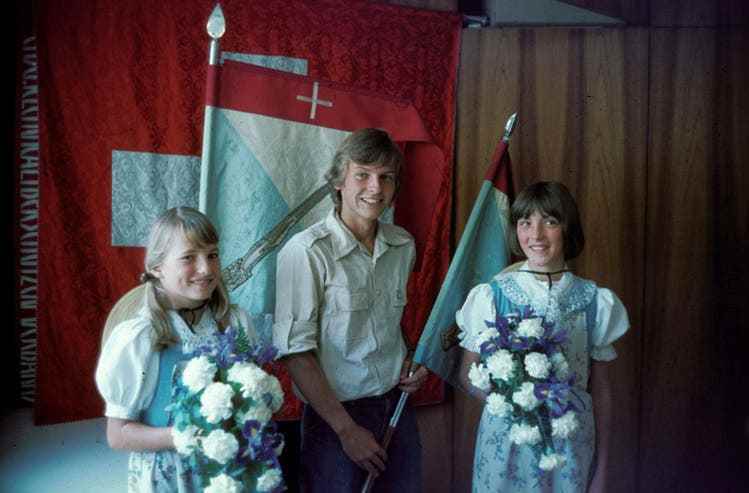Mayer/RDB/Ullstein/Getty
The Knabenschiessen should be a folk festival. It excluded half the people for centuries.
In autumn, Zurich’s youth takes up arms. This has been the case for centuries: the “boys’ shooting set”, as the custom is called when it is first mentioned in the sources, is said to have its origins in the 16th century.
From the paramilitary exercise that it used to be, boy shooting developed more and more into a folk festival. However, it was to be around 500 years before girls were allowed to take part in shooting competitions for the first time in 1991. Before, they were only there as onlookers and maids of honor.
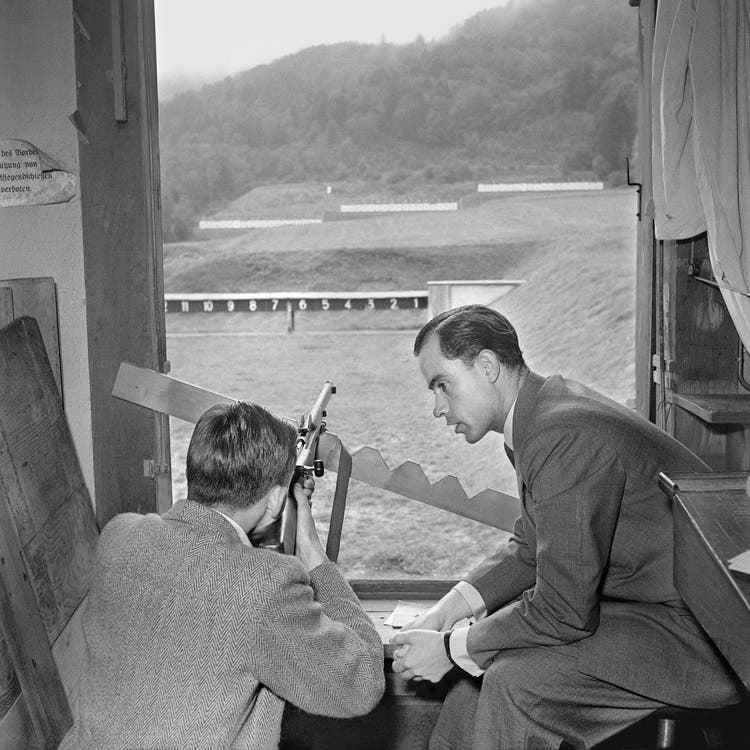
In 1948, an instructor shows a boy how to shoot.
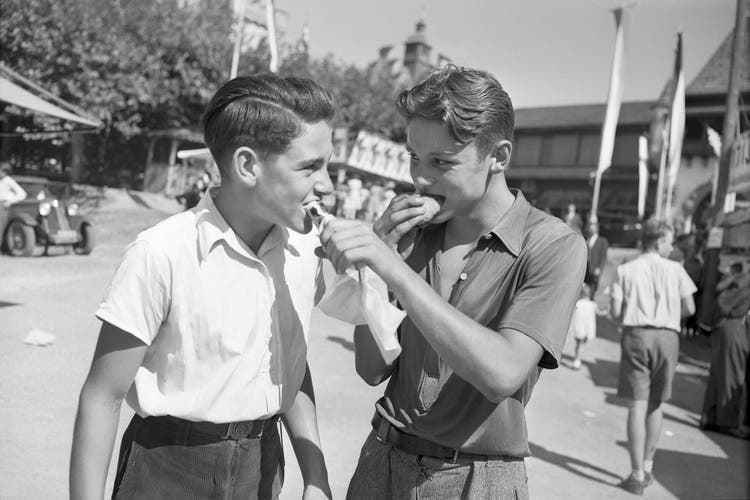
As early as 1947, the bratwurst was part of the boys’ shooting game, like the target and the rifle.
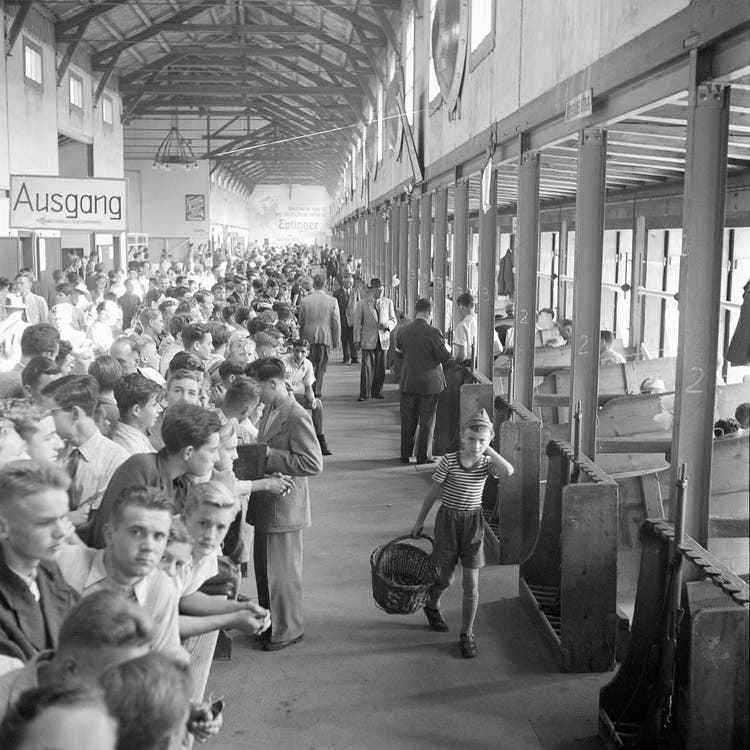
The shooting of boys did not get its name by accident. For centuries, the shooting range was reserved for boys and men only.
For a long time, the focus was on the young men’s ability to defend themselves in boys’ shooting. In the 17th century, the marksmanship competition marked the conclusion of a drill course lasting several weeks under the direction of a captain.
National defense remains central to boys’ shooting even centuries later. In 1901, Mayor Hans Konrad Pestalozzi said in his speech: “We must train men who can stand up for the fatherland in times of danger.”
In the First and Second World Wars, however, shooting for boys was canceled several times. In 1939 the NZZ wrote: “This year’s boys’ shooting, for which the rifle club of the city of Zurich had made all the preparations, also fell victim to the mobilization.”
When the shooting competition took place again in 1941, according to the NZZ, it was met with “joyful responses from young and old alike”. The proximity to the military remains. General Henri Guisan pays several visits to the folk festival.
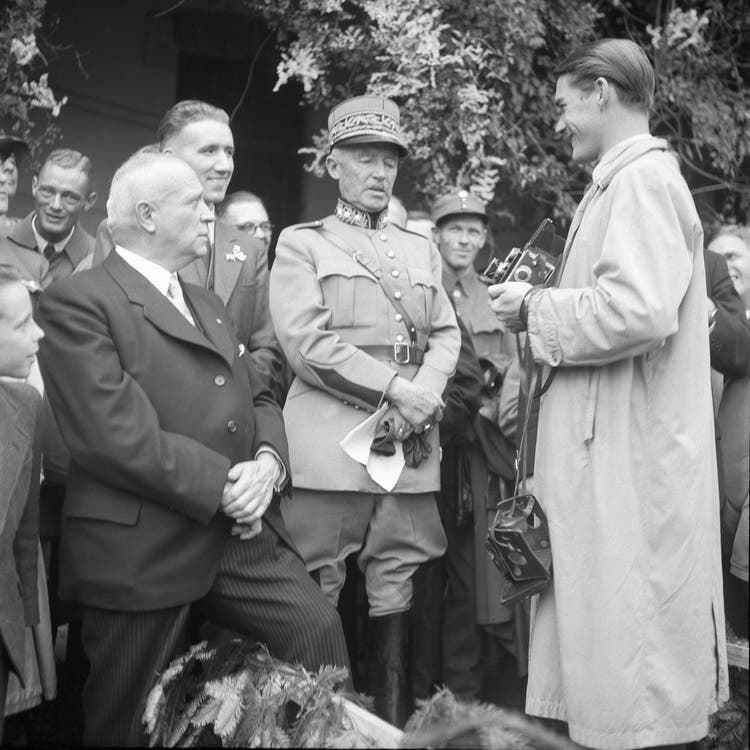
General Guisan during his visit to the Zurich Knabenschiessen in 1945.

The marksman king of 1952, Walter Müller, is honored with a trophy.
In the years after 1945, too, the spiritual defense of the country reverberated. The NZZ writes in 1954: “It is a healthy sporting spirit that leads the boys into this competition for the honor of the marksman king, a sporting spirit that is mobilized in favor of defence, this Swiss defence, which is supported by the entire population.”
In the following years, however, the warlike component receded more and more into the background. “The Kilbi belongs to the right shooting festival!”, says the NZZ. “Anyone who really wants to be shaken and rocked will have fun here.”
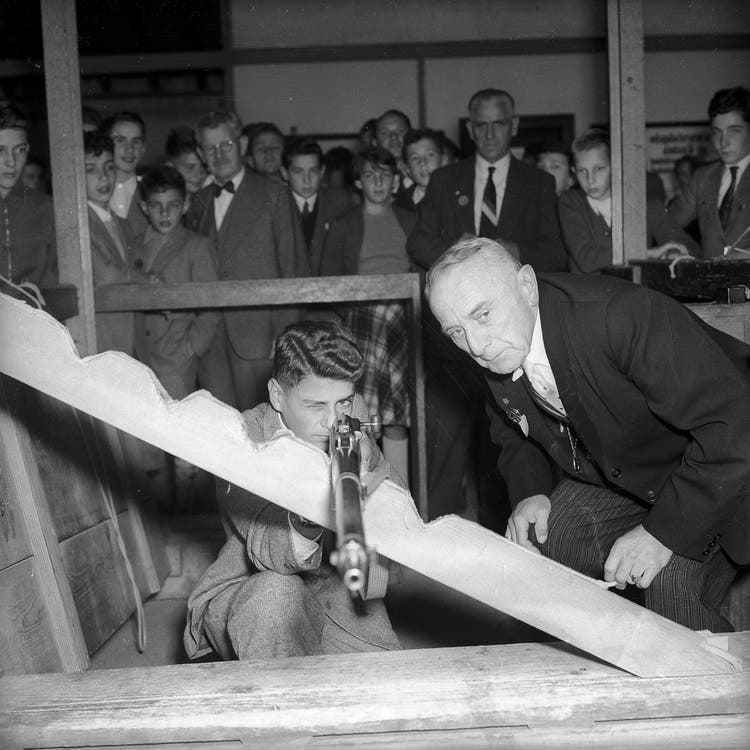
A boy tries his luck in a shooting competition in 1954.
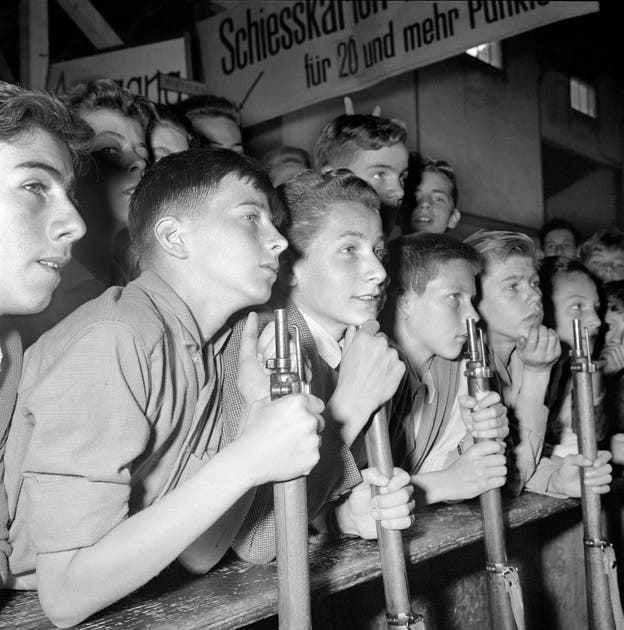
A group of young shooters share in the excitement of a shooting competition in 1955.
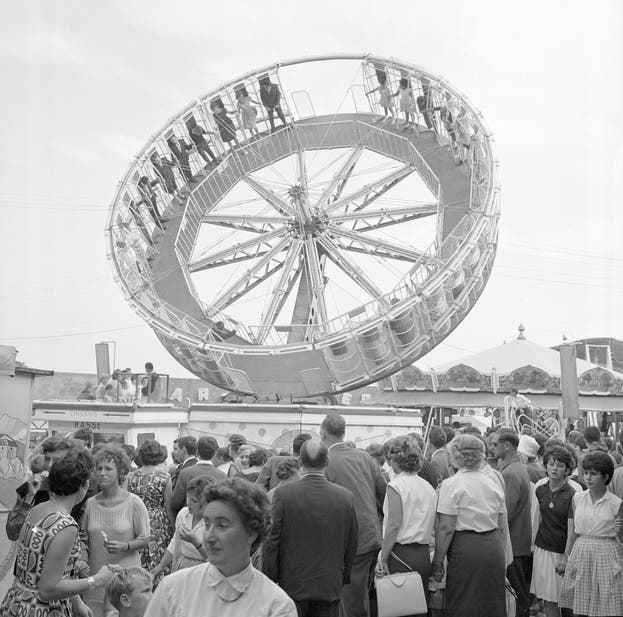
Mopeds have been among the most popular prizes at the gift table for many years.
At the Knabenschiessen in 1955, only the boys grabbed the guns – and the presents at the gift table.
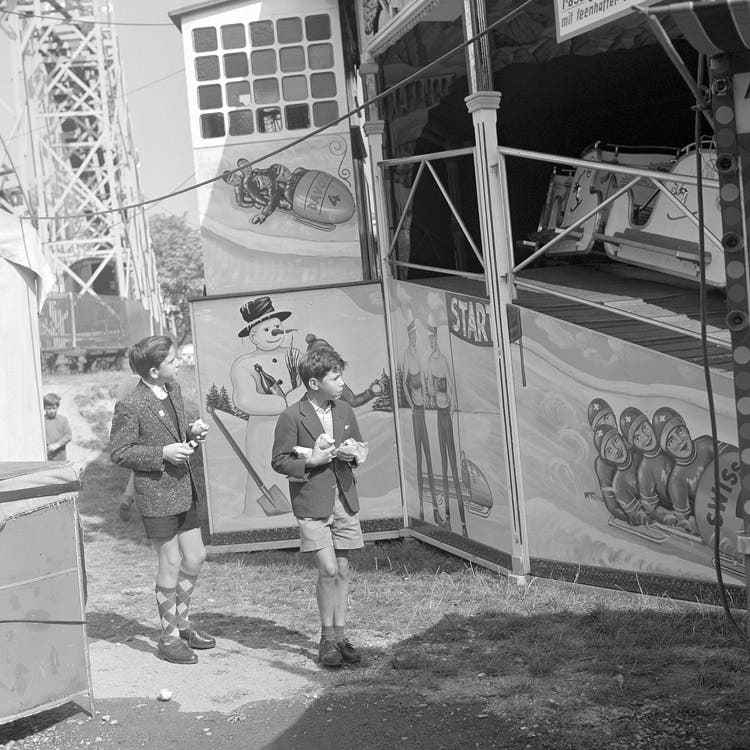
The roller coasters and carousels are just as much a part of the traditional event as the shooting competition.
In the Schützenhaus in the Albisgütli, where the boys’ shooting has been taking place since the turn of the century, not only the king of marksmen is honored, politics is also discussed. The keynote speakers, traditionally including several Zurich city councillors, insisted on promoting themselves to potential voters.
That was also the case in the 1960s. Shaking hands with the marksman king was part of the obligatory September program. The then city councilor Ernst Bieri (FDP) was so impressed by the festival that he even recognized a real manhood in the shooting competition: Whether this great moment, holding a gun in your hands for the first time, wasn’t an important step on the way from boy to boy was a young man, he asked in his speech in 1967.
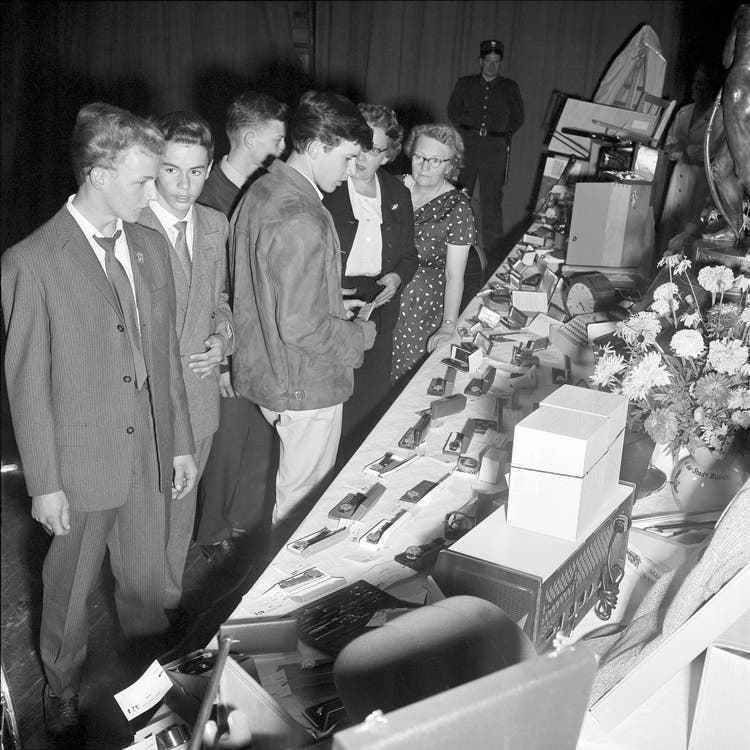
Young people marvel at the table full of gifts at the boys’ shooting in 1960.

Even in 1961, the “Chilbi” was not for the faint-hearted.
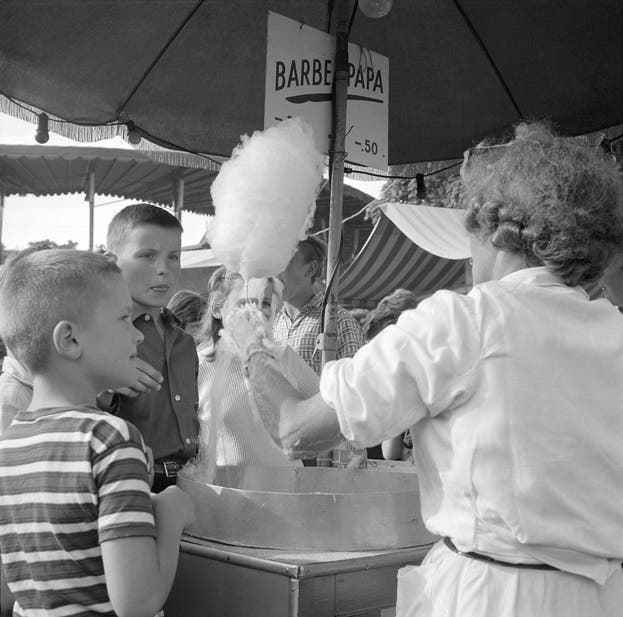
In addition to the obligatory bratwurst, cotton candy is also part of the culinary program.
Hustle and candy floss at the boys’ shooting in 1961.
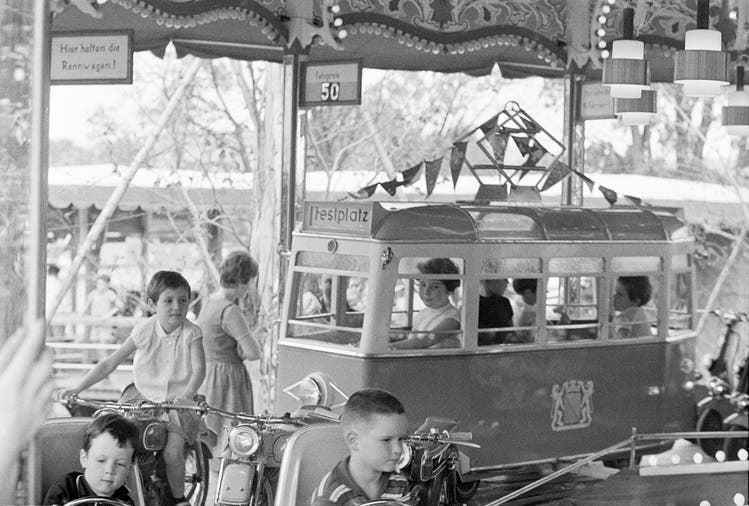
Those who are still too small to shoot can let off steam on the carousel.
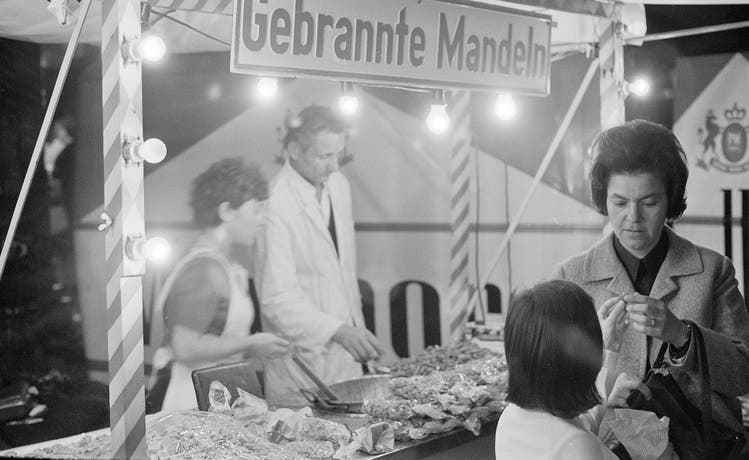
Roasted almonds are a box office hit as early as 1968.
With the youth movement of the 1960s and 1970s, the clothing styles of visitors changed. While a suit and tie used to be mandatory even for young shooters, in later years the people of Zurich dressed much more casually.
The festival is often referred to as a “youth festival” in the reports of these years – although the girls are far from being allowed to take part in the shooting competition at this point.

The shooting competition ensures excitement, the roller coaster gets your heart pumping.
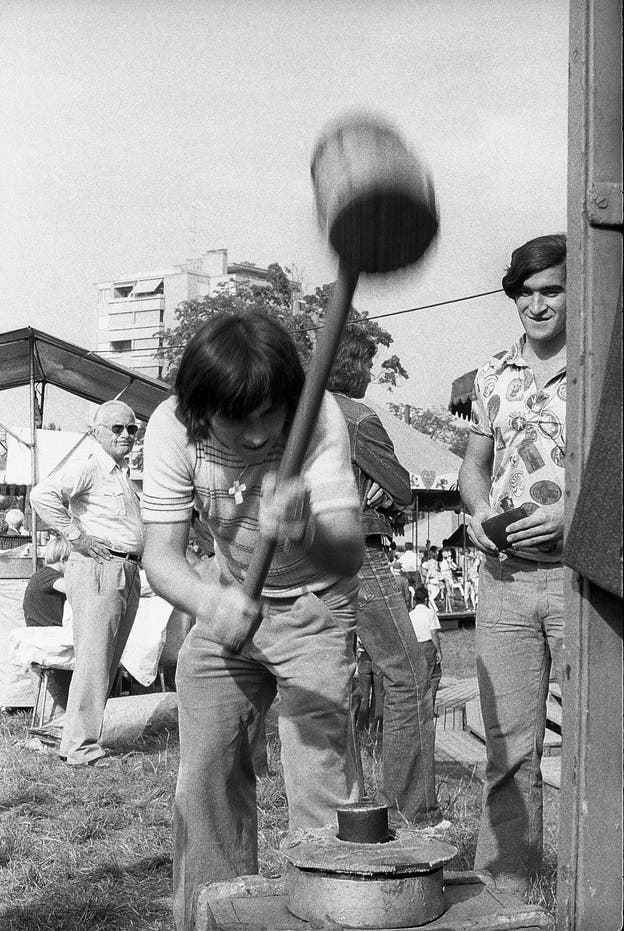
A “Hau den Lukas” should not be missing from a real “Chilbi”.
The classic roller coaster was just as much a part of the 1973 Knabenschiessen as a “Hau den Lukas”.
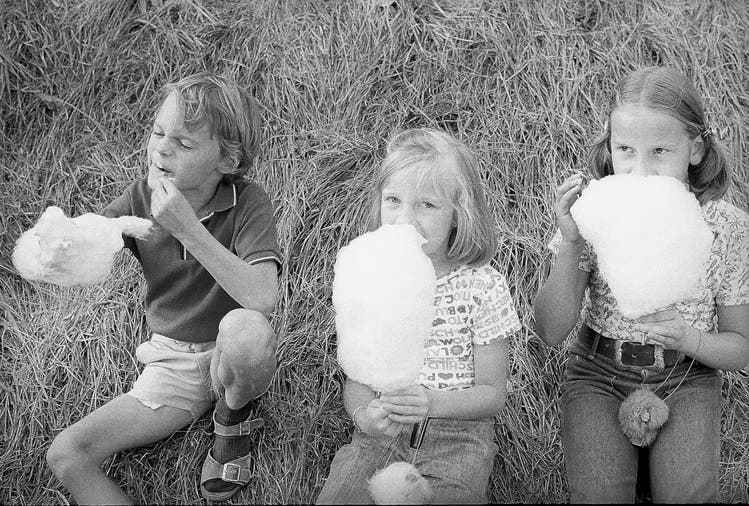
As early as 1973, children could hardly resist cotton candy.
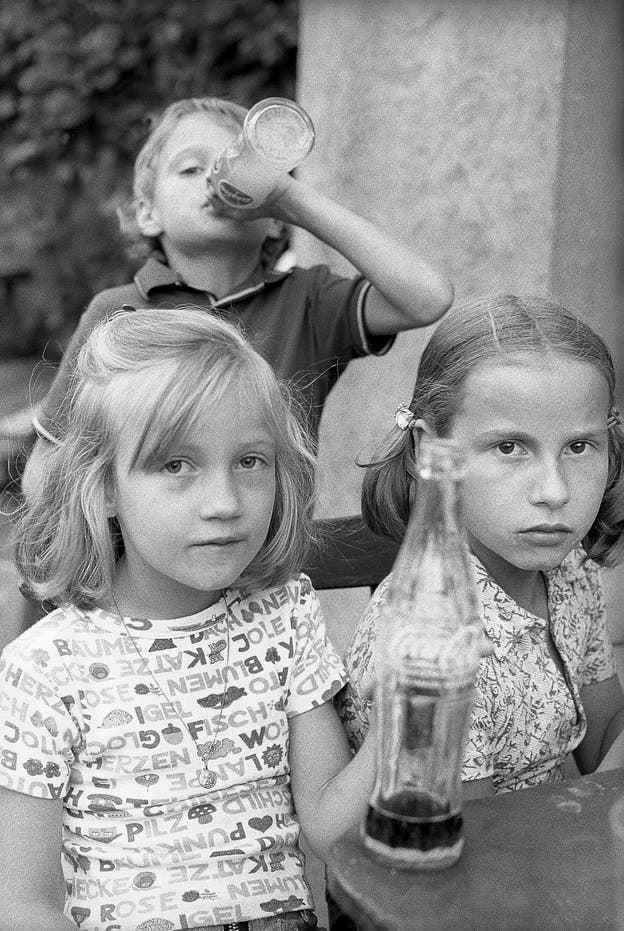
After the cotton candy, the thirst is quenched with soft drinks.
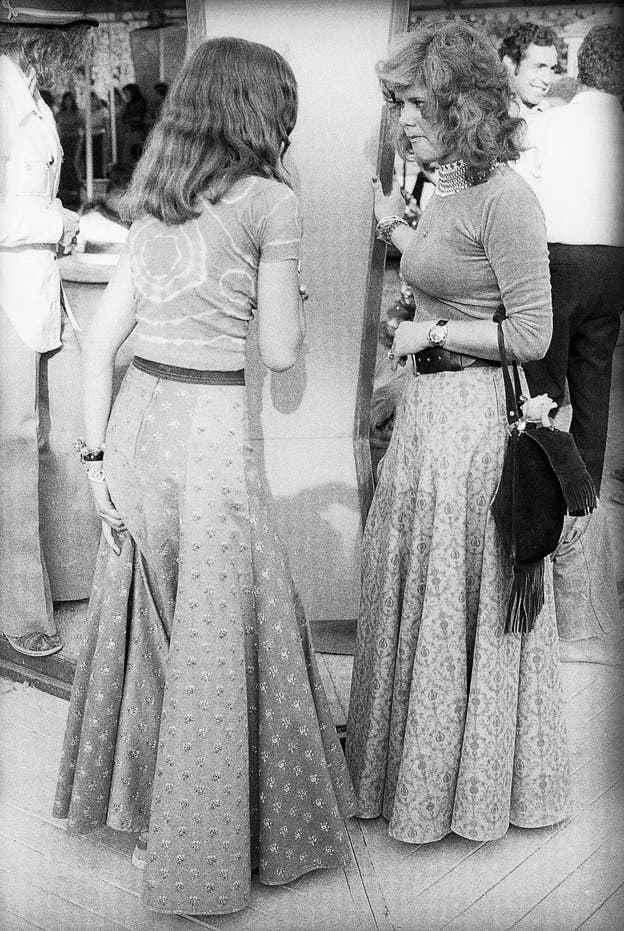
The “Chilbi” is also a catwalk. That might have been the same in 1973 as it is today.
Thirsty children and fashionable young people at the boys’ shooting 1973.
Contemporary clothing did not suit everyone. The fact that the women no longer showed up in long skirts had unforeseen consequences on the “Chilbi”, as the NZZ reported in 1973: Roller coasters that let women’s clothes slide up over the knees had “become pointless”, it was said, “because that female sex in miniskirts and denim pants goes».
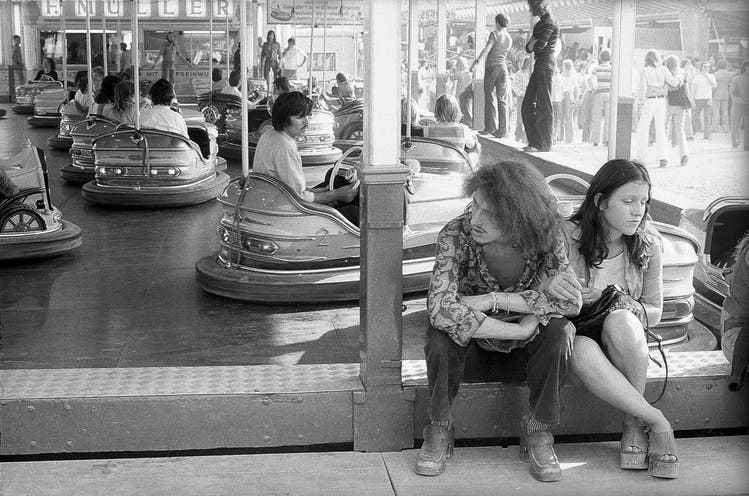
Young people celebrate themselves at the 1973 boys’ shooting.
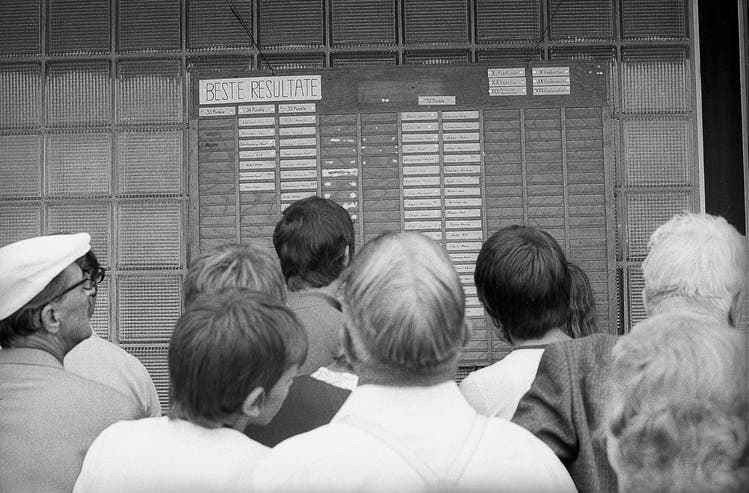
The ranking of the best shooters will be watched with interest.
The Knabenschiessen saw itself early on as a folk festival. But for centuries it excluded half the people. It wasn’t until 1991 that the girls were allowed to shoot for the first time. Decades of discussion preceded the decision before the Schützengesellschaft finally decided to take the step on the occasion of the 700th anniversary of the Confederation.
Since they have been allowed to take part, the girls have been extremely successful. Since 1991, seven marksmen have been crowned. At the last regular boys’ shooting before the corona pandemic, a girl also crowned herself with Neva Menzi. The tradition-conscious shooters don’t want to know anything about renaming the occasion.
